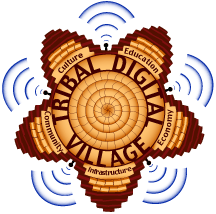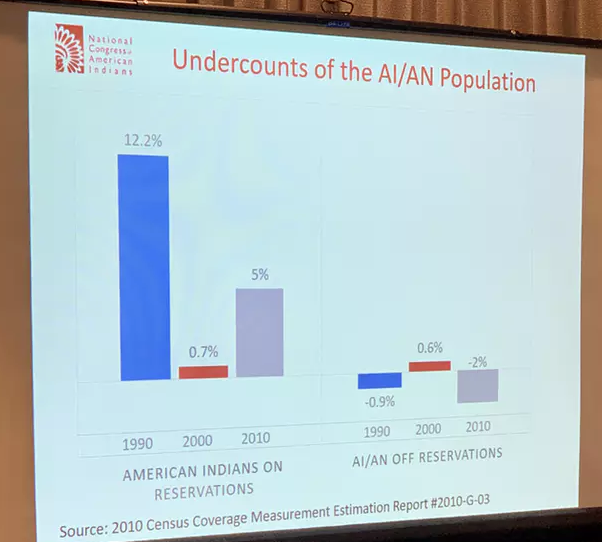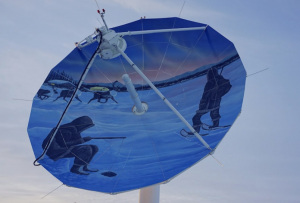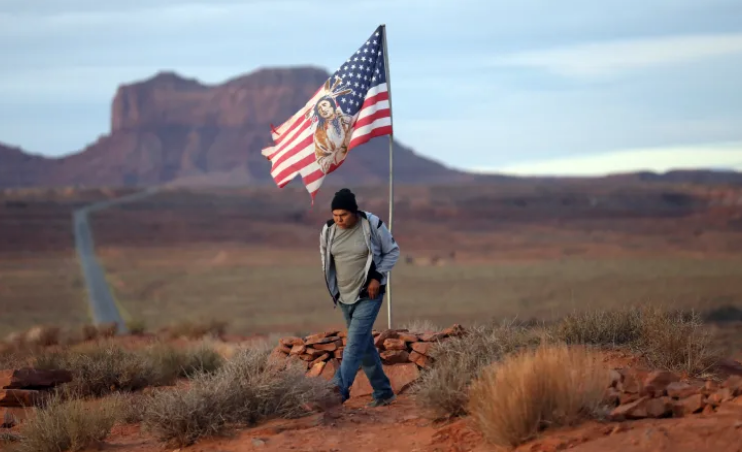The Green New Deal: What does it mean for Indian Country?
by Mark Trahant
Representative Alexandria Ocasio-Cortez, D-New York, and Senator Ed Markey, D-Massachusetts, unveiled “the Green New Deal,” comprehensive legislation that would set the goal of “net-zero greenhouse gas emissions” in ten years, plus investments in new technology, and a more just economic framework. Last year the United Nations warned that the world is running out of time to make a transformation that is “unprecedented in scale” in order to advert climate disaster.
The Green New Deal is House Resolution 109.
It didn’t take long for critics to respond, saying the legislation would end America as we know it.
The White House and Republicans warned of this Green New Deal as socialism. President Donald J. Trump tweeted that Democrats should press forward. “It would be great for the so-called “Carbon Footprint” to permanently eliminate all Planes, Cars, Cows, Oil, Gas & the Military — even if no other country would do the same. Brilliant!”
Other Republicans dismissed the legislation — and the ideas behind it — as too expensive. Rep. Markwayne Mullin, R-Oklahoma, Cherokee Nation, said the “price tag for this Green New Deal rings in at an estimated whopping $7 trillion—a cost American taxpayers would undoubtedly foot the bill for.”
But the cost of doing nothing could even be more expensive.
The Green New Deal raises three big issues: Is the United States finally ready to address climate change? And if so, how? And what will be the impact on Indian Country?
However at some point, sooner rather than later, there is really only one question to address. How much does the country (and the planet) spend on mitigation versus adaptation? Mitigation means trying to slow the impact of humans by reducing the heat-trapping gases that go into the atmosphere (or removing them). Adaptation means everything else, from relocating people, including cities, reacting to climate emergencies ranging from hurricanes and fires to the spread of epidemics and disease.
As NASA describes the problem: “Climate change is one of the most complex issues facing us today. It involves many dimensions – science, economics, society, politics and moral and ethical questions – and is a global problem, felt on local scales, that will be around for decades and centuries to come. Carbon dioxide, the heat-trapping greenhouse gas that has driven recent global warming, lingers in the atmosphere for hundreds of years, and the planet (especially the oceans) takes a while to respond to warming. So even if we stopped emitting all greenhouse gases today, global warming and climate change will continue to affect future generations. In this way, humanity is “committed” to some level of climate change.”
But that commitment has not come from either the Congress of the Trump administration.
There are lots of warning reports about the dangers. Yet some, especially Republicans, continue to say there is no threat.
Scientists working for a variety of federal agencies have a different take. The official assessment could not be more clear: The “Earth’s climate is now changing faster than at any point in the history of modern civilization, primarily as a result of human activities.” And that same report says: “Climate change threatens Indigenous peoples’ livelihoods and economies, including agriculture, hunting and gathering, fishing, forestry, energy, recreation, and tourism enterprises.”
It’s in that context that there is a growing call to do something, to get action that goes beyond another report warning of a dire future.
In November voters in Washington state considered one measure, led by tribal governments, that that would have moved the state toward a carbon-free future. The initiative was voted down and was the most expensive ballot measure ever in the state as the oil and gas industry spent more than $31 million urging a no vote.
But that will not end the debate. Quinault Nation President Fawn Sharp has said tribes should use their regulatory authority to curtail emissions because the impact on treaty activities. Just this week the nation had to close its commercial blueback, or sockeye, salmon fishing season.
A tribal news release said that warmer ocean temperatures driven by fossil fuels “are creating lean times for salmon.” “It’s time to hold oil companies accountable for their past record of denying climate change and their current obstruction of policies to reduce climate pollution,” Sharp said. “The devastation of our iconic blueback salmon has struck at the core of what it means to be Quinault. This incalculable loss jeopardizes the cultural identity of our people and our ability to support and nourish our families. We will be stepping up efforts to hold big oil accountable for their environmental exploits, stop illegal poaching and looking at every other option to help displaced fishermen, including declaring a fishing disaster.”
A headline in the tribal newspaper, Nugguam, was even more chilling. “Have we eaten our last blueback? Let’s hope not. The season was closed last year because of the small number of blueback salmon that returned to the Quinault River. Expectation is for another weak run similar to last year so harvest plans (which have yet to be developed) are likely to fall somewhere between extremely limited and zero.”
“We are now the first generation to begin to feel the effects of a changing climate,” the newspaper said. “It will be this generation that needs to act to prevent it from growing any worse.”
Indian Country would need other transition plans in any shift from fossil fuels. There would have to be a strategy that accounts for rural communities where mass transit is not an option and the pickup truck is often the primary vehicle for both work and transportation.
Some tribes are energy producers. Already the Navajo Nation is going through a dramatic change with the decommissioning of the Navajo Generating Station because it’s owners do not see it as viable. The Navajo Nation Council has considered investing in the coal-based facility in order to protect the jobs.
The call for dramatic changes are growing.
Last month a bipartisan group of presidential economists called for climate action. Forty-five economists published a letter in the Wall Street Journal calling for a carbon tax. They described climate change as a “serious problem” that needs “immediate national action.” The letter was signed by nearly every Republican and Democratic chair of the Council of Economic Advisers since the 1970s as well as former Federal Reserve Bank chairs Alan Greenspan, Ben Bernanke and Janet L. Yellen. “Among economists, this is not controversial,” said Greg Mankiw, who chaired the Council of Economic Advisers under George W. Bush and signed the letter. “The politics is complicated, the international relations is complicated, but the economics is really simple.”
Still, the politics are complicated. There are essentially three camps in Washington. The first wants action, the position that’s found in the Green New Deal. Another group says climate change is important, but so is preventing a major disruption in the economy. Thus, go slow. And, a third group, led by the White House, dismisses the science and any policy that would slow the rush for American “energy dominance.”
The Green New Deal has its critics within the environmental community, too. A news release from the Indigenous Environmental Network said: “We recognize Representative Ocasio-Cortez and Senator Markey’s efforts to help Indigenous communities protect their homelands, rights, sacred sites, waters, air, and bodies from further destruction and hope to be constructive partners in actualizing the goal of generating radical change in the fight to protect the sacredness of Mother Earth.”
However the network disagreed with several provisions. Perhaps the most important sticking point is that any climate legislation should acknowledge that tribes develop and implement Free, Prior and Informed Consent laws and protocols “regarding any development that impacts Indian Country.”
The Green New Deal will not be the final word. Even if the legislation makes its way through the House of Representatives (many Democrats are skeptical) the legislation then must then get through a much more centrist Senate. The legislation has 67 cosponsors in the House, including Rep. Deb Haaland, D-New Mexico, Laguna Pueblo.
Then even the sponsors get that the specifics of the Green New Deal are not as important as movement. As Rep. Ocasio-Cortez tweeted in December: “Our goal is to treat Climate Change like the serious, existential threat it is by drafting an ambitious solution on the scale necessary — aka a Green New Deal — to get it done.
Mark Trahant is editor of Indian Country Today. He is a member of the Shoshone-Bannock Tribes. Follow him on Twitter – @TrahantReports





Comments are closed here.